- Overview
- Trip Outline
- Trip Includes
- Trip Excludes
- Gallery
- Reviews
- FAQ
07 NIGHTS & 08 DAYS MELODIOUS LADAKH TRIP FROM LEH TO LEH ITINERARY
Itineraries
Day 1
Arrival Leh Airport & Acclimatized
Arrival Leh Airport and meet our representative to assist you for the complete Leh Ladakh trip from Leh to Leh. Check-in to the Hotel. Welcome drink on arrival. We recommend you completely relax for the rest of the day to enable yourselves to acclimatized to the rarefied air at the high altitude.
Overnight stay in Hotel at Leh
Day 2
Leh Local Sightseeing
After breakfast visit the Monasteries of Shey, Thiksey, and Stok Palace.
Shey – it was the ancient capital of Ladakh and even after Singge Namgyal built the more imposing palace at Leh, the kings continued to regard Shey, as their real home. The importance which was attached to Shey - the seat of Ladakh's heartland - is attested by the enormous number of Chorten about the village, particularly around the palace complex and barren plain to the north of the road.
Thiksey –is one of the largest and most impressive Gompas. There are several temples in this Gompa containing images, stupas and exquisite wall paintings. It also houses a two - storied statue of Buddha which has the main prayer hall around its shoulder.
Hemis – Beautiful monastery located in Karu.
Overnight stay in Hotel at Leh.
Day 3
Leh to Nubra Valley
After breakfast at hotel drive towards Nubra valley via Khardungla pass(18379 feet) by surface passing thru Horzey & Gangles Village. On arrival in Nubra Valley, drive to diskit, visit Deskit, the HQ town of Nubra Valley. Driving for 30 Kms takes to Khalsar Bridge. Visit desklit Monastery. Further drive from Deskit to Hunder, you may see a few Double Humped, Hairy and Bactrian Camels.
Overnight stay in Camp / Hotel at Nubra Valley.
Day 4
Nubra Valley to Turtuk Village Excursion
Turtuk-village 80 kms from Hunder. Turtuk in Ladakh is a picturesque border village situated along the famous Silk Route that has quite a past. Most recently, Turktuk was one of the biggest stages of the Kargil war in 1999 when Pakistan troopers occupied a small area on the ridges overlooking Turtuk . Locals depend on farming and providing mules and porters to the Indian Army the five villages of Turtuk, Tyakshi, Thang, Pachathang and Chalunka were in POK till the 1971 war.
Overnight stay in Camp / Hotel at Nubra Valley.
Day 5
Nubra Valley to Pangong Via Shayok Village
Pangong Lake 175 km from Leh is a beautiful lake. The name Pangong is derived from the Tibetan word Pangong Co-meaning long, narrow, enchanted lake. There is a narrow ramp-like formation of land that runs into the lake which is a favorite among tourists and photographers. Due to the saltiness in the water of the lake, there is very less micro-vegetation. There are no fish or other aquatic life in the lake, except for some small crustaceans. However, numerous ducks and gulls over and on the lake surface can be spotted in plenty. There are some species of scrub and perennial herbs that grow in the marshes around the lake.
Overnight stay in Camp at Pangong Lake.
Day 6
Pangong to Tsomoriri
After breakfast leave from Pangong and drive towards Tsomoriri Lake via Mahe Bridge The lake is at an altitude of 15,075 ft. It is the largest of the high altitude lakes entirely within India and entirely within Ladakh in this Trans-Himalayan bio-geographic region. The Tsomoriri Lake is 19 km long and 7 km wide and the panoramic view of the Lake is amazing with Turquoise colored water.
Overnight stay in Camp / Hotel at Karzog.
Day 7
Tsomoriri to Leh via Tso Kar & Taglang La
Morning drive back to Leh, en route visit Chumathang Hot sulphur springs, famous Tso Kar Lake and the highest pass on Leh-Manali Highway. Check-in to the hotel at Leh. Evening free in Leh bazaar. Overnight stay in hotel in Leh.
Overnight stay in Hotel at Leh.
Day 8
Leh Airport drop
After breakfast transfer from Leh to Airport to catch flight for your further journey while recalling all the memorable moments of your exotic trip…
-
Pick up & Drop location at Leh Airport by Individual Cab.
-
07 Nights Accommodation in double or triple or quad shearing basis.
-
Transfers & sightseeing by 1 Non AC cab (Innova / Xylo / Scorpio / Tempo Traveler) as per the itinerary.
-
Taxes& Expenditures Included: Parking, Toll Tax, Luxury Tax, Green Tax Fuel Exp. and Driver Exp.
-
07 Breakfast & 07 Dinner
-
Air Fare / Train Fare / Travelling or Accidental Insurance or Claim or settlement.
-
Monument Entrance Fee / Camera Fees.
-
Any Adventure Activity River Rafting, Yak ride, Boating, Paragliding Etc.
-
Any Personal Expenses – Laundry, Shopping, Tip, Extra Meals, Hard or Soft Drinks Etc.
-
Extra sightseeing other than specified or normal route.
-
Oxygen cylinder.
It can be fully customized as per customer's choice. Customer can choose any date as per there availability.
Yes, you can. The mention costing has been calculated based on mentioned persons. If no of persons have changed then costing will be automatically revised.
This 434 KM long Srinagar Leh Highway usually closed on 15th November and usually opened up by the 15th April. It may vary due to snow, weather conditions. Snow clearing work will organized by BRO.
When making a road trip to Leh Ladakh over Srinagar Leh Highway, you must keep in mind that even when the road from Srinagar to Leh opens, it takes some time to get them stabilized. Due to snow sliding and loose gravel, the road blocks are very common in the initial days, especially around Zojila Pass.
Even there is one-way traffic with time restrictions of traffic flow in the initial days because the road is not wide enough due to snow walls and one-way traffic is only allowed at Zojila Pass.
Hence, it is recommended that you should wait for a couple of weeks before planning the trip on Srinagar Leh Highway after its official opening. You have to also considered on you Ladakh road trip from Srinagar, there are many lonely yet freezing stretches on this Highway in early April.
This 474 km long Leh-Manali Highway usually opens up in between the last week of May to the 15th of June and generally closed it by 15th of October. It has been a norm that BRO set up the targets to open the highway early only to realize that the weather has the last laugh. Eventually, it will all get down upon the weather and snow conditions in the month’s March / April when snow clearance operations are at peak in many parts of the Himalayas including this belt of Himachal Pradesh too.
When making a road trip to Leh Ladakh and you have to access Leh-Manali Highway, you must keep in mind that even when the road from Leh to Manali opens, it takes some time to get them stabilized. Due to snow sliding and loose gravel, the roadblocks are very common in the initial days.
Even there is one-way traffic with time restrictions of traffic flow in the initial days because the road is not wide enough due to snow walls and one-way traffic is only allowed at Rohtang Pass.
Hence, it is recommended that you wait for a couple of weeks before planning the trip on Manali Leh Highway after its official opening. The last thing you will want on your much awaited Leh Ladakh road trip is to get stranded on some lonely yet freezing stretches of Leh-Manali Highway in early June or late May.
If you want to explore Ladakh with sufficient time then it will always be recommended, you should always travel to Ladakh from Srinagar Leh Highway and come back from Manali Leh Highway. Though some of traveler suggest from Manali, as Manali to Leh is more adventurous. But if you give some consideration, you can enjoy the beauty from both ways. Here some reasons to why start from Srinagar than Manali -
• Properly Acclimatization
When you travel to Ladakh via Srinagar-Leh Highway, you passes the altitude in a gradual manner. That means, your body gets more time to get acclimatized for the high altitude of Leh and you feel much better plus relaxed upon reaching there. Science tell that, if you increasing altitude gradually then, the chances of facing AMS (Acute Mountain Sickness) is lower.
If you start your Ladakh trip via Manali-Leh Highway then most of the places go through more than 13000 ft. Not only that you have to cross few highest passes in this route from the very beginning. Hence, by the time you reach such a high altitude, your body is not properly acclimatized and it will increase the chances of AMS (Acute Mountain Sickness), which can spoil your whole Ladakh trip.
• Disproportionate Travel Distance
It is suggested on both route (either Srinagar-Leh Highway or Leh-Manali Highway), to divide the distance minimum in two parts. When you travel from Srinagar it will divided more proportionately than Manali-Leh route. Generally traveler stay at first night at Kargil and very next day they reach at Leh, it is more proportionate.
But, when you start you Ladakh tour from Manali it will suggest to stay at Keylong and to avoid Sarchu (high altitude than Keylong) and very next day you have to travel till Leh. You have to cover more than double distance on very next day of your tour.
But, when you come from Leh and go to Manali then your body already acclimatized properly and you can stay at Sarchu. So the distance also divided properly and proportionately.
• Better Placement of Tsomoriri Lake in the Itinerary
As you already aware after read the detail blog, Tsomoriri is one of the best part of Ladakh. if you travel towards Manali from Leh then you can better place Tsomoriri lake in your itinerary and save a day for you.
You should not visit Tso Moriri while coming from the Manali side because first, you will not have any permits and secondly, even if you get the permits somehow your body will not be acclimatized properly to sleep at a very high altitude of Tso Moriri lake.
So, you will have to go to Leh first, get the permits for Tsomoriri, do all your sightseeing in Leh Ladakh and then visit Tso Moriri from Leh. Then again, go back to Leh from Tsomoriri to exit from Leh to Srinagar-Leh Highway. All it means is that you should include one more day in your Ladakh itinerary.
But you can always exit from Tsomoriri lake towards Manali via Tso Kar lake near Leh-Manali Highway, it gives more flexibility to place it in the itinerary when you travel from Leh towards Manali.
• Avoid to issue permit of Manali-Rohtang Pass for Non-HP vehicle
In 2011, the Himachal government floated a strange rule which disallowed any Non-HP vehicle (now) including two-wheelers (bike / scooters) to ply on Manali to Rohtang Pass road. The govt. stated that this rule was brought into effect to regulate un-necessary traffic plying on Manali to Rohtang Pass road and make the traffic situation a bit better.
Later the blanket ban was lifted and only 1200 tourist vehicles are permitted on Rohtang Pass every day. You have to get the Rohtang Pass permit to visit Rohtang Pass from Manali now.
For the people going past Rohtang Pass towards Lahaul or Spiti Valley or further to Leh Ladakh, the rule required to get a Beyond Rohtang Pass permit which is available online or using the mobile app now. If you plan to rent a bike, this will mean a delayed start from Manali as it required you to provide vehicle RC number to apply for Beyond Rohtang Pass permit.
But the most important thing is that, those vehicle are coming from Rohtang to Manali (Ladakh to Manali & Lahaul-Spiti to Manali), do not required any permit.
• Rohtang Pass permit not issuing on Tuesday
If you are traveling from Manali side to Rohtang Pass, you will not be allowed to travel on Manali-Rohtang Pass road. Also, the permit to cross Rohtang Pass will not be issued on Tuesday.
However, you can travel from Keylong side to Rohtang Pass on any day, including Tuesday also. Then you do not need and permit for Rohtang Pass when you travel to Manali from Keylong side.
So you can plan any day of the week.
• Better Enjoyment of Views on Manali Leh Highway
The scenic beauty of Manali-Leh Highway is lifetime achievement. As well as this route is more adventurous than Srinagar-Leh Route. So don't spoil it ! For better enjoyment you have to acclimatized properly.
It is not only very risky but also difficult to enjoy the beauty of landscape with tired or exhausted mind or health on very first day of the tour. So it will much better to enjoy the beauty with pleasant mind and make the journey memorable.
Based on the above consideration start your dream vacation from Srinagar & end at Manali and make your vacation memorable one.
Tsomoriri is a must visit place of Ladakh. Where you can found raw nature and taste of remote Ladakh. Few travelers planning to visit Tsomoriri from Manali side but, few points are below behind reason why you should avoid Tsomoriri from Manali side.
• No properly Acclimatization to sleep at Tsomoriri
You should not visit Tsomoriri from Manali side because your body will never be acclimatized properly to sleep at such a high altitude on very beginning of the tour. It is never recommend people to even sleep at Sarchu while traveling from Manali to Leh. Please keep in mind, altitude of Sarchu is around 14075 ft and Tsomoriri is around 15075 ft. Thogh Sarchu Altitude is less than Tsomoriri, but the altitude difference between two places are only 1000 ft. But when comes to altitude, then 1000 ft is is quite a lot.
Especially when you suffering from AMS (Acute Mountain Sickness), then 350 ft altitude difference may save your life. As traveler called Sarchu The Vomit Hilton and it observed that very few people can survive at Sarchu without any problem. So, is it worthy to take risk at such altitude from very first day to spoil your vacation?
Now, Tso Moriri lake is even higher in altitude than Sarchu. So, there is no gradual ascend for your body to accept such a high altitude. You cannot sleep that early in the trip at such height. It is because you may have only slept properly at Manali (the day before yesterday), or even sleeping at Keylong / Jispadoes (last night), but it may not help.
While on the other hand, if you are coming back from Leh side, then your body is in much better condition to accept sleeping at the high altitude of Tso Moriri lake. The main reason is that you are coming after covering other high altitude places in Ladakh, especially sleeping at Pangong Tso. Such acclimatization will help you enjoy the beauty of the lake much more and without any worries of falling sick.
• Helpless when medical emergency required
Tsomoriri is located at a desolated place in Ladakh and in case if there is any help that is required whatsoever after falling severely sick due to AMS (is travel from Manali side), you are looking for about 8 hrs drive to Leh.
Any wise person can judge what it means to be away from medical help for about 8 hrs in any medical emergency. Hitting with AMS badly, is indeed is an emergency as AMS can be fatal if not dealt with quickly.
The main problem is when people are suffering from AMS, they tend to avoid admitting it and either say it is motion sickness or says it is fatigue. This ignorance aggravates the symptoms further, and the condition worsens mostly.
• Tsomoriri allow only Leh Taxis
As per Leh taxi union rules, you will have to a taxi from Leh to visit Tso Moriri lake unless you are not traveling by your own car or bike. When coming from Manali, you will be having Manali taxi in most cases unless you plan to call a Leh based taxi to pick you from Manali or make such an arrangement on the way to Tsomoriri in Manali-Leh Highway. Behind this reason is again properly acclimatized.
• Tsomoriri allow only Leh rented bikes
As per Leh bike rental union rules, you will have to rented a bike based out in Leh to visit Tsomoriri lake unless you are not traveling by your own bike. When coming from Manali, you will be having Manali or Delhi rented a bike which will not be allowed at Tsomoriri, if confronted at the various checkpoints installed by union guys.
Gain behind this reason is properly acclimatized.
• Inner Line Permits are required to visit Tsomoriri
In case you need to visit Tsomoriri lake from Manali or Ladakh, Indians also need Ladakh Inner Line Permits to visit Tsomoriri.
Although inner line permits are available online, domestic tourists need to get the permit copy stamped from the DC office in Leh or Tourist Reception Center (TRC) in Leh. Also, the fee for the Inner Line Permit needs to be paid in person.
Hence, you will need to reach Leh to get the inner line permit stamped and pay the required fees. Otherwise, you need to get the permit arranged in advance and handed over to you before the check post, either at Tso Kar or Debring.
In case you are a foreigner, you need the protected area permit to visit Tsomoriri. This permit is issued from the DC office in Leh as well as online. In the case of Protected Area Permit online, you can select the travel agent and pay the fee as well. So, this is a minor issue for a foreigner visiting Tsomoriri lake.
If you are traveling from Manali side to Rohtang Pass, you will not be allowed to travel on Manali – Rohtang Pass road. Also, the permit to cross Rohtang Pass will not be issued on Tuesday.
However, you can travel from Keylong side to Rohtang Pass on any day, including Tuesday also. Then you do not need and permit for Rohtang Pass when you travel to Manali from Keylong side.
So you can plan any day of the week.
If any nature lover goes to choose between Pangong Lake or Tsomoriri, then Tsomoriri lake will get much higher position than Pangong Lake. Just because of its raw nature and less crowd or less commercialization. However, if you are visiting Leh Ladakh for the first time, you should visit Pangong Lake because it is something that you should not miss on your first trip to Ladakh without regretting it.
In winter, the roads to Ladakh from Manali and Srinagar are closed. Hence, the only way to make a trip to Ladakh in winters is to fly to Leh and then do the sightseeing within Ladakh to places like Pangong Tso, Nubra Valley and Tso Moriri.
The roads within Ladakh over Khardung La and Chang La remain open all around the year with the exception of few days of heavy snowfall. So, you can make a trip to both Nubra Valley and Pangong Tso over them, respectively.
There are no high passes that come on the way to Tsomoriri via Mahe bridge route. Hence, the road from Leh to Tsomoriri remains mostly open all around the year from the Mahe bridge route. Similarly, the road connectivity between Leh and Hanle exists in the winter months. But due to heavy snowfalls of snow road may closed any time.
Few things you have considered before planning a winter trip to Ladakh.
• Take sufficient rest
Directly flying to Leh any time may trigger AMS (Acute Mountain Sickness). But in winter, chances of AMS (Acute Mountain Sickness) is very high. So, take complete rest at least 48 hours after arrival at Leh. Plan your vacation properly to avoid too long journey and high altitude from very first half of your vacation. Increase altitude level gradually to avoid AMS.
• Maintain your body Oxygen level and Minerals
In this high altitude you have yo maintain your body Oxygen and minerals level. Take adequate water and keep sipping black tea, black coffee or hot honey lemon tea or you may use ORS water or Glucon-D water and keep sipping it after every half an hour to keep yourself adequate hydrate and maintain your body Oxygen and minerals level.
• Ready to fight with very cold weather
Directly flying to Leh, that too in winters, may trigger some AMS (Acute Mountain Sickness) issues. So, take garlic & black pepper too as they provide warmth in the body. Sometime in high altitude you may face chilled wind so take sufficient woolen clothes with you to combat with cold.
• Carry good sleeping gears
As not all hotels will be open, so you might be staying at home stays, especially at Nubra, Pangong Tso, and Tsomoriri. Best is to carry your sleeping bags if you find the quilts provided by the home stay uncomfortable or inadequate. Best to stay those hotel / guest house, provide centrally heating system.
• Carry enough dry food and cash
In this season ATM and en-route Dhabas might be shut down even Leh also. So please carry enough cash and carry enough dry food for any emergency situation.
• Don't plan with tight schedule
In this season you may stuck any time anywhere for a couple of days. BRO tries to keep the roads over Khardung La and Chang La open all around the year but in case of heavy snowfall, the roads may get closed for a couple of days. So don't plan with tight schedule and add few buffer days in your itinerary.
• Book a window seat of your flight
In this winter season the frozen beauty of Ladakh attracts many tourist. You can enjoy this beauty after arrive at Leh Airport. But when you in the sky you can also enjoy the frozen vistas also. To enjoy the Arial view of most attractive Himalayan range and frozen vistas, book a window seat in your flight. It can gives you a lifetime memory.
The July and August has been considered monsoon season in North India. Few areas of Srinagar Leh Highway (till around Kargil) and Leh-Manali Highhway (till around Baralacha La) you may face monsoon effect. Landslide may affect your vacation. There will be mud in road especially Zozila Pass, Rohtang Pass and lower area of Himachal Pradesh & Jammu-Kashmir.
But once you get closer to Ladakh, then Ladakh being a rain shadow region is very less affected by monsoon rains. Things are changing all over the world, but it is generally safe and secure. But no one can guarantee about the sudden incident.
In this season you can found the clear blue sky at Ladakh region. So it is the best time for photographer. Following are some tips to plan Ladakh in monsoon season.
• Be prepared for monsoon hassles in lower hills
August is peak monsoon time in general up in North India. At some parts of Leh-Manali Highway (generally after Baralacha La pass) you will surely face monsoon hassles and can face around Sarchu also. The Baralacha La mainly marks the boundary of the rain shadow region from the Leh side.
Similarly, Srinagar-Leh Highway will be in mess before Drass and Kargil belts. You will face monsoon rains and slush especially till the moment you cross Zojila pass from Srinagar side. Beware, with rains Zojila Pass will be a nightmare.
But once you start getting closer to Leh Ladakh, then being a rain shadow region, it is less affected by monsoon rains. Please note that, when traveling to Leh Ladakh in August, you may face sometime the landslides or roadblocks in the lower hills due to heavy rains.
Especially the route on troublesome between Sonamarg to Zojila Pass and Keylong to Manali, around Darcha.
• Be prepared for driving in slush
There will be mud on the roads, especially around Zojila Pass on Srinagar Leh Highway and similarly around Darcha near Keylong & Gramphu to Rohtang pass on Leh-Manali Highway.You must be prepared, drive with extra care in slush and do always remember the location of the engine chamber of your car if you are self-driving.
There could be stones hidden below in slush which can damage your engine sump / chamber, leaving you stranded in the middle of nowhere. Do not push through too much in case you get stuck, try the back-n-front tactic to come out or use push or wooden plank / rubber mat. Otherwise, you may end up with burned clutch plates.Do learn some tips and tricks about driving in slush and do not forget to carry must-have essentials when self-driving to Ladakh.
• Be prepared for crossing furious water stream
When you travel to Ladakh in monsoons, you will notice that most rivers will be flowing in spate and so does the water crossings on Leh-Manali Highway.
Many of the water crossings have been passed through using pipes or making bridges on Leh-Manali Highway by BRO. However, some of the water crossings are still troublesome on Leh-Manali Highway, especially between Sarchu to Zingzing Bar to Jispa.
If you reach late at such water crossings in the day, they may become the reason for spending a night in the middle of nowhere or puncturing your engine sump while crossing it.
If riding a motorcycle, gumboots will help you move on overflowing water crossings and help you keep your other boots dry to ride further.
• Be alert on shooting stones
When you travel in a monsoon in the hills, the landslides are common and so does the shooting stones. When driving or riding or even sitting in the car, you must always be alert. Watch out to see over a shooting stone from the side of the mountains. Hence, be a attentive driver and passenger when traveling to Ladakh in August or monsoons.
Be careful on stretches that have loose gravel or mud, like the ones you can spot between Khardung village to Hunder in Nubra Valley and road along with Shyak River. Such, stretches are more common for shooting stones. Even a small stone can pierce through the windshield, and your trip will be screwed. So be alert and keep a watch on the movement when traversing such mountains which are exposed to shooting stones.
• Carry water resistant clothes and boots
Always carry a rain coat, waterproof shoes or sandals at least along with a water repellant lower & upper with quick-dry material. Carrying such a jacket will help you in many ways when there is rain. It may end up saving your electronic equipment too.
So, do not forget to carry these at the very least. For riding bikes, gumboots are always an essential things to cross the water stream.
• Carry tarpaulins & few waterproof bags
Apart from the rain coat, carrying small tarpaulins or waterproof bags which will protect your clothes, luggage or electronic gear if the need arises. It will also help you protect your luggage which you may plan to put on top of your car.
It is one of the cheap yet effective essential equipment for a trip to Ladakh in monsoons. If you hire a car then ask your car pilot to do this.
• Check windshield wipers
When you are driving windshield wipers are very essential and before start your journey check the wipers are properly working or not.
• Always sleep early and leave early
When you exploring the remote areas or easily inaccessible areas of Himalayan Destination, you should be always follow a rules “Sleep Early and Leave Early”. It becomes more important in the rainy season as you are already expecting delays due to landslides, roadblocks, slow speed of cars in rain.
So, always try to follow this principle as it will allow you to give extra time on your day trip. It will also help you cross the water crossings when water is less in the early hours of the day.
• Plan with couple of buffer days
You should expect rains in monsoons, which may delay your daily plans or make you stuck behind a landslide for a day or two sometimes. If you are running with a tight schedule, well, delay of one day somewhere will trigger tensions in mind, which will not help you enjoy the Land of Lama. You will continuously keep worrying about missing a flight or train.
So, always better to plan your trip with a couple of buffer days when traveling in monsoons.
• Protect your electronics devices from moisture
Always protect your electronics devices from moisture. Always put them to a safe zone in your luggage.
Hikers, skiers, and adventurers who travel to high altitudes can sometimes develop acute mountain sickness. Other names for this condition are altitude sickness or high altitude pulmonary edema. It typically occurs at about 8,000 feet, above sea level. Dizziness, nausea, headaches, and shortness of breath are a few symptoms of this condition. Most instances of altitude sickness are mild and heal quickly. In rare cases, altitude sickness can become severe and cause complications with the lungs or brain.
Higher altitudes have lower levels of oxygen and decreased air pressure. When you travel in a plane, drive or hike up a mountain, or go skiing, your body may not have enough time to adjust. This can result in acute mountain sickness. Your level of exertion also plays a role. Pushing yourself to quickly hike up a mountain, may cause acute mountain sickness.
The symptoms of acute mountain sickness generally appear within hours of moving to higher altitudes. They vary depending on the severity of your condition. Few type of sickness are as follows with there general symptoms -
1. Mild acute mountain sickness : If you have a mild case, you may experience.
General symptoms are dizziness, headache, muscle aches, insomnia, nausea and vomiting, irritability, loss of appetite, swelling of the hands, feet, and face, rapid heartbeat, shortness of breath with physical exertion etc.
2. Severe acute mountain sickness : Severe cases of acute mountain sickness can cause more intense symptoms and affect your heart, lungs, muscles, and nervous system. For example, you may experience confusion as a result of brain swelling. You may also suffer from shortness of breath due to fluid in the lungs.
Symptoms of severe altitude sickness may include with Mild acute mountain sickness as followed by coughing, chest congestion, pale, complexion and skin discoloration, inability to walk or lack of balance, social withdrawal etc.
Your risk of experiencing acute mountain sickness is greater if you live by or near the sea and are unaccustomed to higher altitudes. Other risk factors include the follows :
1. Quick movement to high altitudes.
2. Physical exertion while traveling to a higher altitude.
3. Traveling to extreme heights.
4. A low red blood cell count due to anemia.
5. Persons who have Heart or Lung disease.
6. Taking medications like sleeping pills, narcotic pain relievers, or tranquilizers that can lower your breathing rate.
7. Past bouts of acute mountain sickness.
8. Taking Alcohol or Tobacco may increase the chances of AMS.
If you’re planning on traveling to a high elevation and have any of the above conditions or take any of the above medications, talk to your doctor about how best to avoid developing acute mountain sickness.
You can take some important preventive steps to reduce your chances of acute mountain sickness. Get a physical to make sure you have no serious health issues. Review the symptoms of mountain sickness so you can recognize and treat them quickly if they occur. If traveling to extreme altitudes (higher than 10,000 ft), ask your doctor about ACETAZOLAMIDE, a medication that can ease your body’s adjustment to high altitudes. Taking it the day before you climb and on the first day or two of your trip can lessen your symptoms.
When climbing to higher altitudes, then you have to plan accordingly to gain altitude gradually.
Generally we used Non AC Innova / Xylo / Scorpio / Similar for this route up-to 6 head and above 6 head used Tempo Traveler.
Inquire to us or reach us directly 7980464525 / 8697471273 and book your package with advance amount as directed to you & we will sent to you the confirmation detail within 7 working days from date of advance received.
More than 45 days advance amount is non refundable.
In between 44 to 30 days 50% of the total tour cost.
In between 29 to 15 days 75% of the total tour cost.
In between 14 to 07 days 85% of the total tour cost.
Less than 7 days / No show or after arrival in Bhutan 100% of the tour cost.
Yes you can. But it is fully depends on houseboat / hotel / camp / guest house / transportation availability. Cancellation policy may applicable as per houseboat / hotel / camp / guest house / transporter policy. Seasonal hike may applicable for this circumstances.
Yes you can with prior information. Additional costing may applied for this up-gradation. Up-gradation is depends on availability.
For all Indian citizen Voter Card / Passport / Aadhar Card / Driving License (Adult only) & Birth Certificate / Passport (Child only) with photocopy of the said documents and passport size color photo for all traveler.
For all foreigner Passport is mandatory with photocopy and passport size color photo for all traveler.
Please note that without valid documents permit can not be issued. Better to ask before travelling for valid documents list. Several parts of Ladakh falls under protected area and you need a special permit / Inner Line Permit (ILP) and suggested go with a trusted / reliable Tour & Travel agencies only.
Inner Line Permit or ILP, is a travel document issued by the Government of India which allows an Indian and foreigner travelers to travel to a protected area for a limited time period. Obtaining this permit is mandatory for all the citizens who do not belong to Ladakh.
Foreigners visiting Ladakh are required to obtain Ladakh Protected Area Permit (PAP) before entering this region.
The Inner Line Permit, or ILP, is valid for a period of 3 weeks for Indians, and 1 week for foreigners. It should also be remembered that there is no limit on the number of times you visit a place within the valid period as long as you have the necessary permits with you.
Please noted that the Inner line Permit is not required for visiting all the areas. In fact, it is only required for some areas like Dah Village, Hanu Village, Khardung La, Nubra valley, Turtuk, Sumur, Panamik, Pangong Tso, Man Merak, Chusul, Nyoma, Loma Bend, Hanley, Didder La, Tangyar, Tsomoriri & Tyakshi.
Now, it has become easy to apply for inner line permit without visiting any government office. Just visit the newly launched portal and apply here for ILP. The whole process for obtaining the permit has been described below.
o Firstly, go to http://lahdclehpermit.in/ and after entering the URL, allow the webpage to load first. When it has loaded, click on the half circle which appears at the bottom of the screen and reads “Issue”. When you do this, a fly menu will appear on the screen. Next, click on “Domestic Clients”.
o This will take you to another page which will require you to fill out your details elaborately.
o Next, mention the year of your travel, your name, the state you reside in and your gender. Click on the ID type on the drop down menu and select the one which you feel the most comfortable with, or which you possess with you.
o Fill out the information of your Aadhar Card, Driving License, Passport or Voter ID number.
o Mention your complete address
o Under the section, “Issue Permit” field, select “Directly”.
o Click on the field mentioned “Date of Arrival”. When you do this, a calendar will appear on the screen. Select your date of arrival in Leh town.
o After you have completed filling all the information, review the entire information once again because once you submit it, you cannot alter the information any longer.
o Next, click the Submit button. A fly out which will appear on the screen will tell you that you have been successfully registered. Click “Ok”.
o After you have done that, you will be taken to the next page where you will be required to select the areas that you need an Inner Line Permit for.
o At the bottom of the screen, select your date of arrival in Leh as well as the date of departure.
o Select the apply button for Permit
o A new fly out will pop up on the screen informing you that the circuit has been assigned successfully. Click OK.
o A new pop up which reads “Inserted Successfully” will appear on the screen. Click OK.
o After you have done that, you will be taken to another page which will contain the details of your permit. The page will mention your name, ID number, state of residence and different fee related structures.
o You can now either take a print out of it or take a screenshot of it.
After completing the above procedure you need to submit the fees. It should be noted that there is no option for making the payment online. For making the payment and getting the permits signed or stamped, you will have to take the printout of the online form along with a copy of it and visit the following address:
TIC Office, Opposite J&K Bank
Main Market, Leh

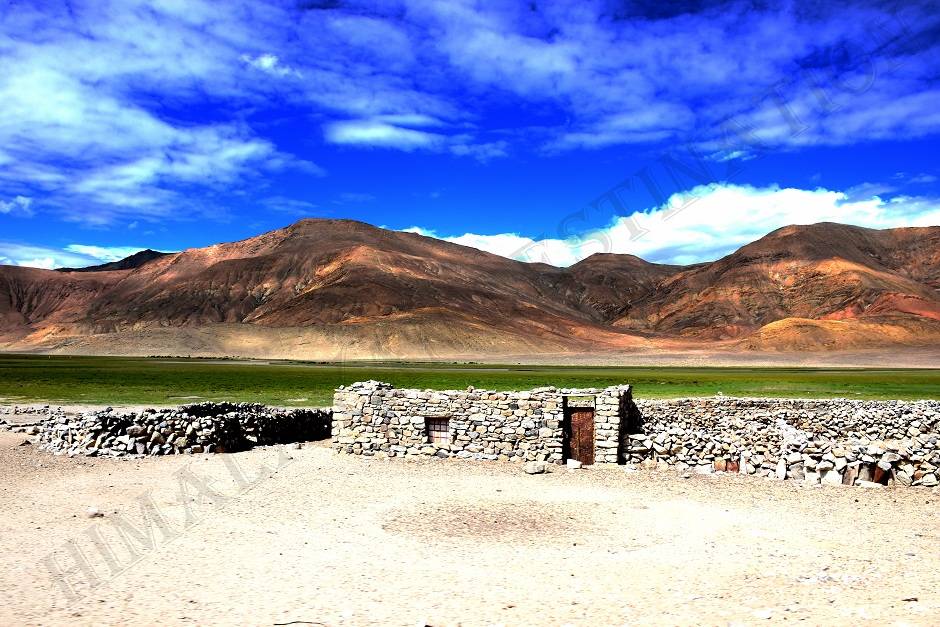

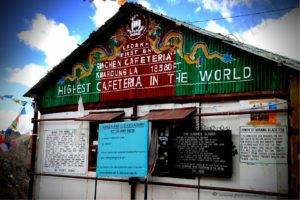
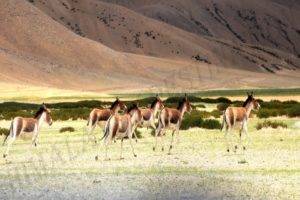
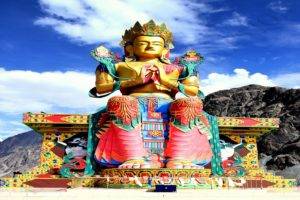

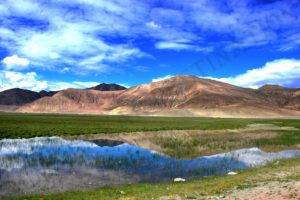

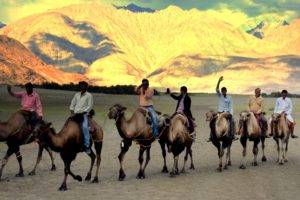

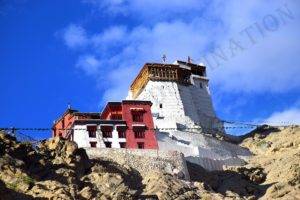
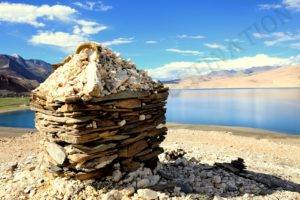
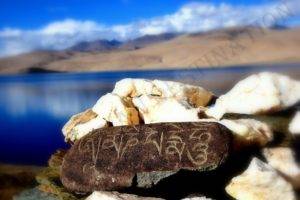

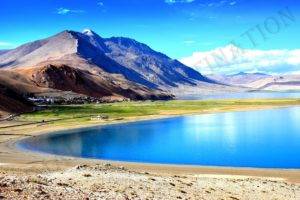
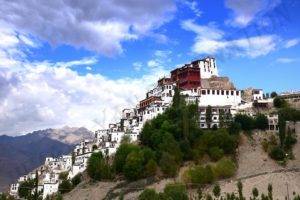
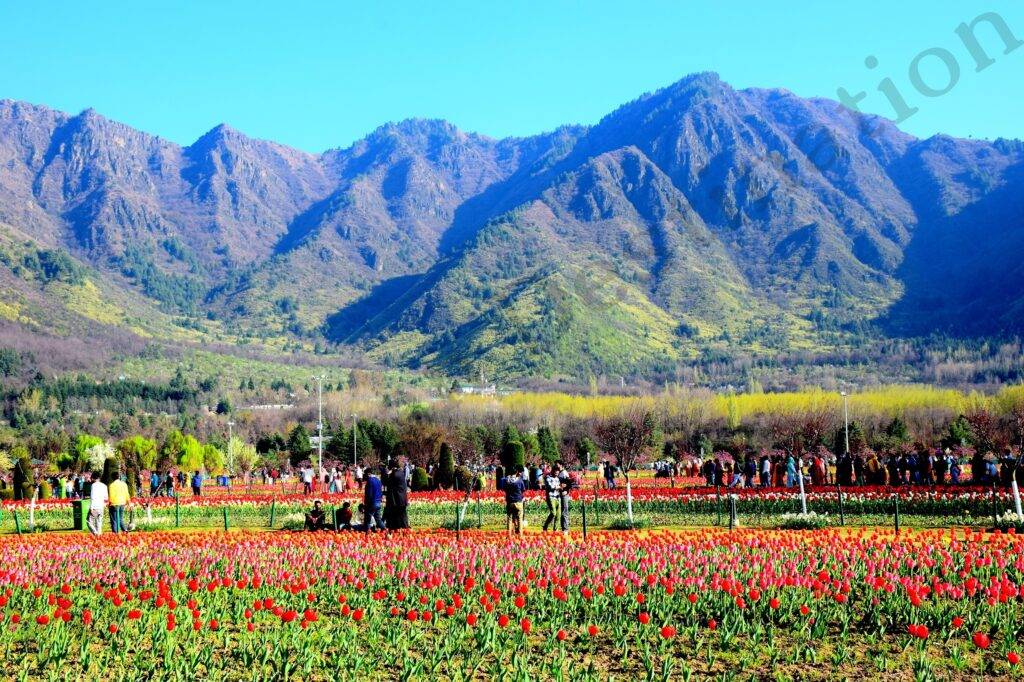
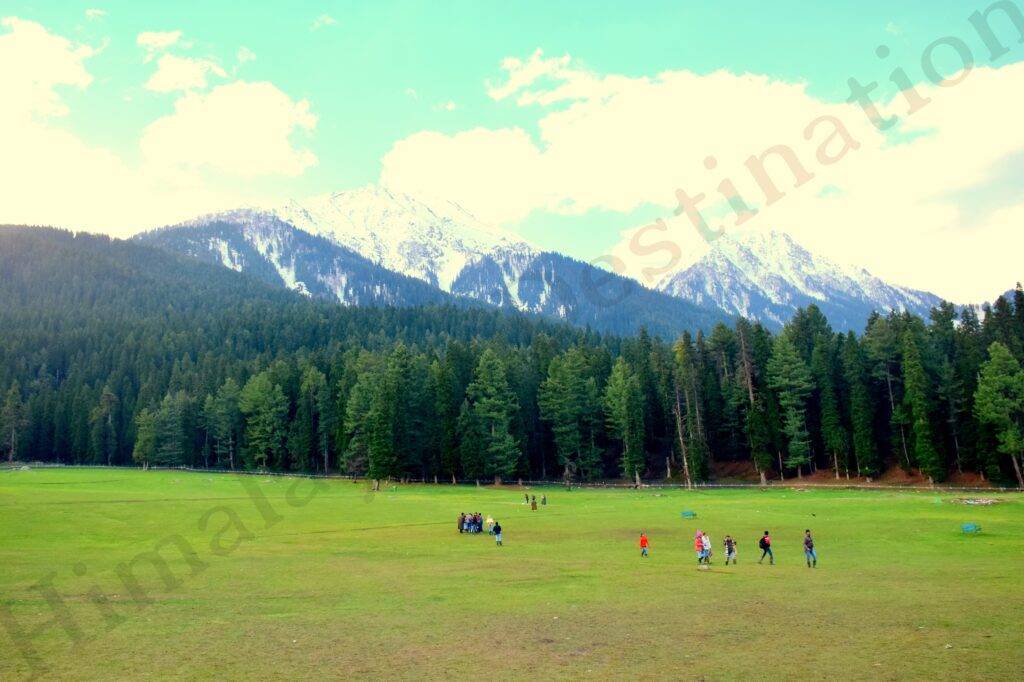
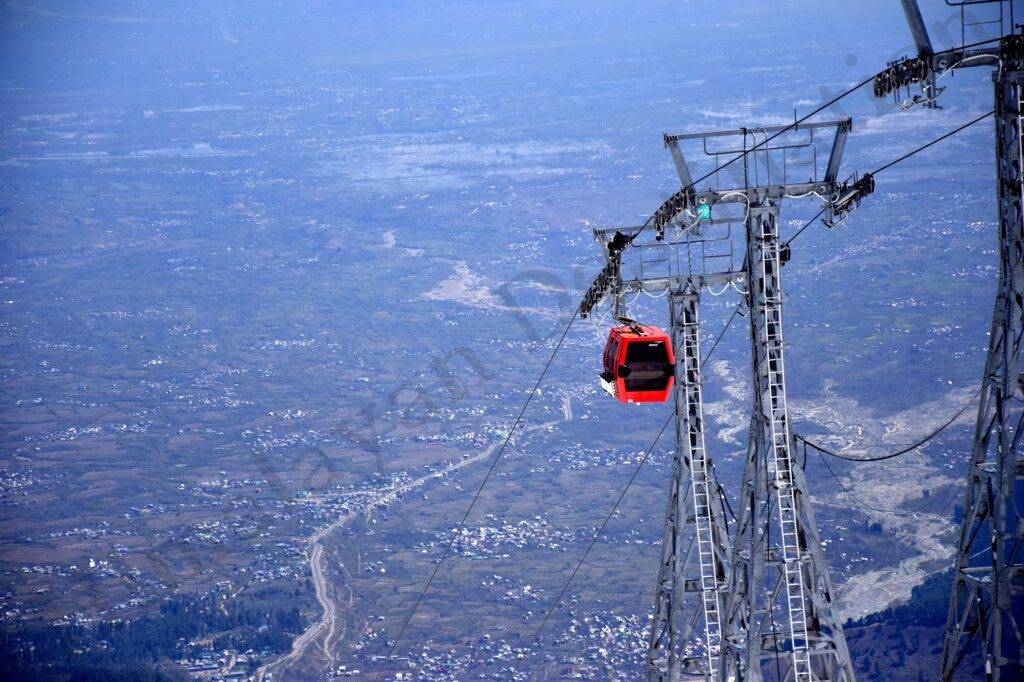
There are no reviews yet.